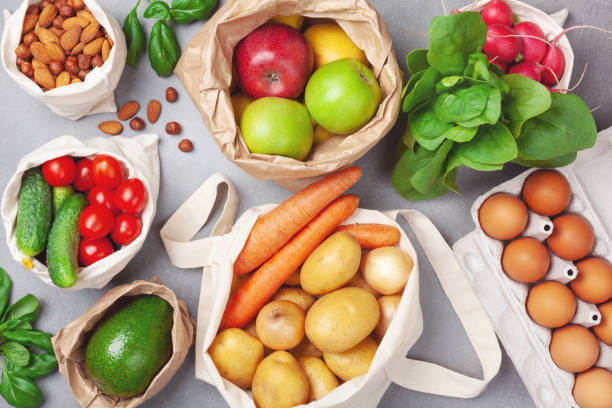Fruit and vegetable packaging is an essential farm practice that ensures fresh crops make their way from the field tothe customer. Since all fruits and vegetables are perishable crops, choosing the right packaging for fruits and vegetables is crucial for farmers to survive in the market. The main function of packaging is to preserve the fruits and vegetables’ quality and extend their storage life.
More importantly, fruit and vegetable packaging represents an integral component in marketing management. As a matter of fact, a package is a way of communication with the customers, and therefore, it’s directly related to the sales strategy in fruit and vegetable packaging.
In this article, we will introduce the types of fruit and vegetable packaging and explain how we should choose effective fruit and vegetable packaging. The trends of fruit and vegetable packaging are also analysed in details.
Packaging in the Fruit and Vegetable Industry
The packaging of fresh fruits and vegetables is one of the important steps in the long and complicated journey of fruits and vegetables from farmers to consumers.
Bags, crates, baskets, cartons, bulk boxes, and pallet containers are convenient containers for handling, transporting, and selling fresh produce.
Although the industry generally believes that container standardization is a way to reduce costs, the trend in recent years is to adopt a wider range of packaging sizes to meet the diverse needs of wholesalers, consumers, foodservice buyers, and processing operators.
Packaging and packaging materials contribute significant costs to the agricultural product industry. Therefore, it is important that packagers, shippers, buyers, and consumers have a clear understanding of the various packaging options available.
The Key Considerations for Fruit and Vegetable Packaging
A properly designed product container should contain, protect and identify the product.
The packaging should be very attractive, and everything should be clearly mentioned on the packaging.
Key considerations for effective fruit and vegetable packaging include:
1.Variety – Suitable for different types of produce.
2.Recyclability – Environmentally friendly materials.
3.Sales Appeal – Eye-catching designs to attract customers.
4.Shelf Life – Enhances freshness and longevity.
The following are the more important general requirements and functions of food packaging:
1. Non-toxic and compatible with specific foods.
2. Hygiene protection, moisture-proof, grease-proof, gas-proof, and odor-proof.
3. Shading, impact-resistant, transparent, and easy to open.
4. Re-seal function, easy to handle size, shape, and weight restrictions.
And key factors for frozen packaging of fruits and vegetables include:
1. Moisture Resistance
Packaging must prevent moisture loss and protect against freezer burn, which can degrade texture and flavor.
2. Temperature Durability
Materials should withstand extreme low temperatures without becoming brittle or breaking.
3. Sealed Integrity
Airtight seals are essential to prevent contamination and preserve freshness by blocking air, which can lead to oxidation and freezer burn.
4. Material Safety
Non-toxic, food-grade materials that do not interact with the produce are critical to ensuring health safety.
5. Portioning and Convenience
Packaging should facilitate easy portioning for consumer use, such as resealable bags or pre-measured packs.
6. Visibility and Labeling
Transparent sections can help showcase the product’s quality, while clear labeling provides essential information like storage instructions, expiration dates, and nutritional details.
7. Durability for Transit
Strong and tear-resistant packaging ensures the product can handle stacking and movement during transportation without compromise.
8. Sustainability
Recyclable or biodegradable materials are increasingly important to meet environmental standards and consumer preferences.
As mentioned above, when considering fruit and vegetable packaging, it’s essential to focus on factors such as freshness preservation, sustainability, and convenience. Packaging should protect the produce, extend shelf life, and be easy to transport and store. Additionally, eco-friendly materials are increasingly demanded by consumers, along with packaging designs that enhance product visibility and branding.
At Primepac, we offer one-stop solutions tailored to meet your specific needs. From sustainable materials to custom designs, we’re here to help you deliver high-quality fruit and vegetable packaging that aligns with your brand’s goals. Reach out today to learn more!
Types of Fruit and Vegetable Packaging
Primary package:
The layer of the package which is in direct contact with the product; usually offered to the customer.
Secondary package:
Holds the primary package during transport and storage, and therefore facilitates its handling.
Regardless of their functions, there are various types of fruit and vegetable packages. These include:
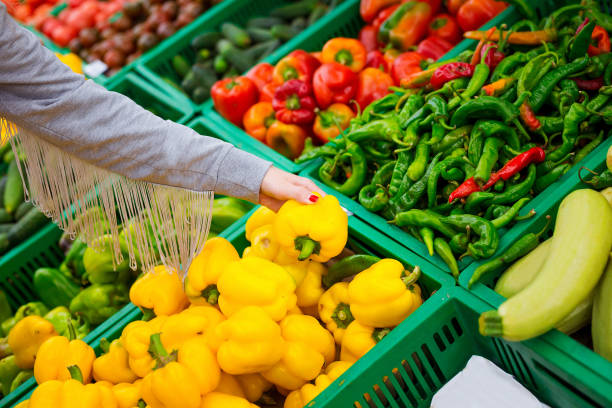
# Cardboard, wooden, or plastic boxes or crates:
A widely accepted way of packing various fruit and vegetables. The boxes come in various shapes and sizes and are adaptable to different products in fruit and vegetable packaging.
# Woven baskets:
Commonly used by small-holder farmers and made of locally available materials. These baskets provide very good ventilation for crops. However, their rough materials can damage the crops during transport and handling.
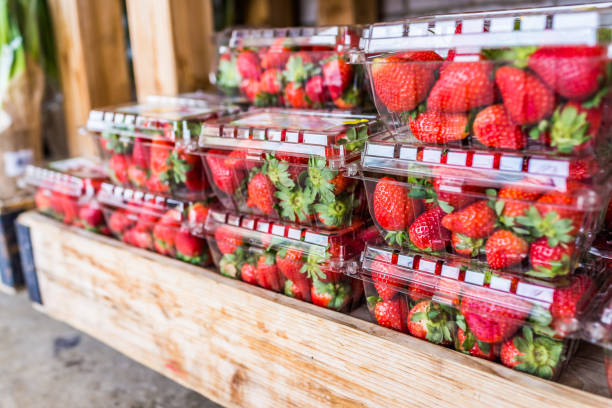
#Clamshell packags:
Clamshell packaging is a rigid, plastic container with a hinged lid, offering both protection and visibility for fruits and vegetables like berries and tomatoes. It helps prevent bruising and external contamination while allowing consumers to easily view the product. The stackable design optimises retail shelf space, and ventilation holes ensure proper airflow to reduce moisture buildup, extending freshness.
# Polyethylene (PE) bags:
Polyethylene (PE) Bags are transparent plastic bags commonly used for packaging loose produce like leafy greens, carrots, apples, and other bulk vegetables. They are lightweight, cost-effective, and provide a convenient way to store and transport fruits and vegetables. PE bags help maintain product freshness and can be easily stacked for display in stores.
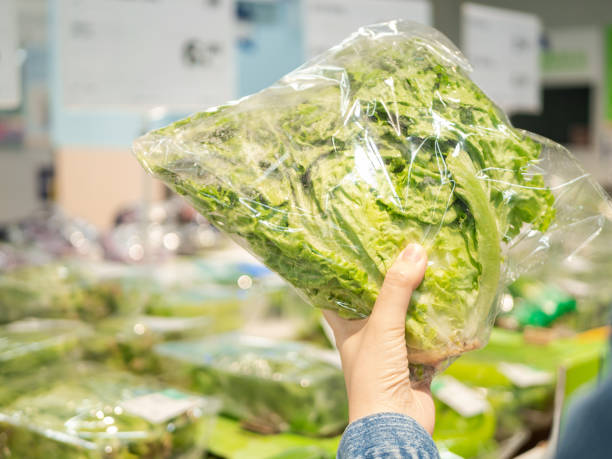
#Mesh bags:
Mesh Bags are flexible, netted bags commonly used for bulk items like onions, potatoes, and citrus fruits. Their breathable design allows for air circulation, preventing moisture buildup and helping to extend shelf life. Mesh bags are lightweight, cost-effective, and easy to handle, making them a popular choice for both retail and transportation. They also offer visibility of the product, allowing customers to easily see the contents, enhancing convenience and appeal.
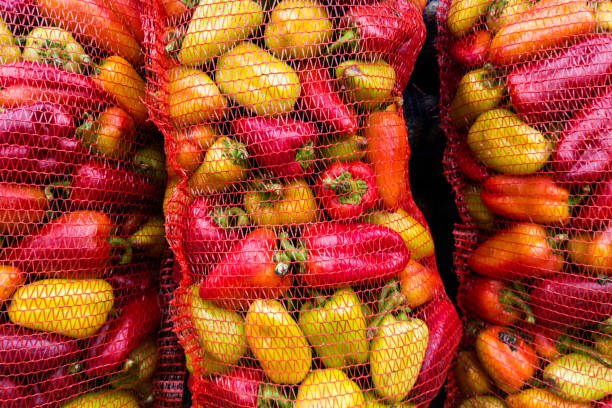

#Foams:
The most popular type of plastic product is PS, or EPS for short. EPS foam is valued for its excellent elasticity, which provides cushioning and protection during transportation. It also acts as a barrier to water vapor, helping to maintain product freshness. Additionally, EPS is easy to mold into various shapes, offering flexibility in packaging design. Its ability to block dust and particles ensures cleanliness and hygiene.
#Molded pulp packages:
Molded pulp is a versatile material shaped into containers or cushioning products designed to protect delicate items during transportation. Widely recognised for its eco-friendly properties, molded pulp is an ideal choice for packaging fresh fruits and vegetables.
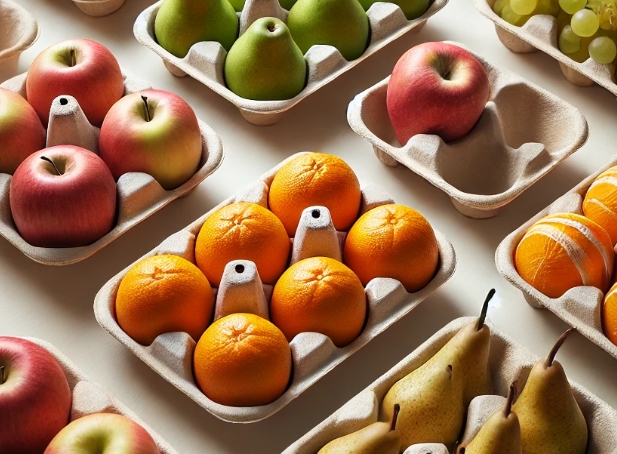
#Modified atmosphere packages:
A special package created by removing the air from the package and replacing it with a single gas or a mixture of gases. The carefully managed gas mixture within the package maintains an optimal crop respiration rate and extends crop storage life and quality.
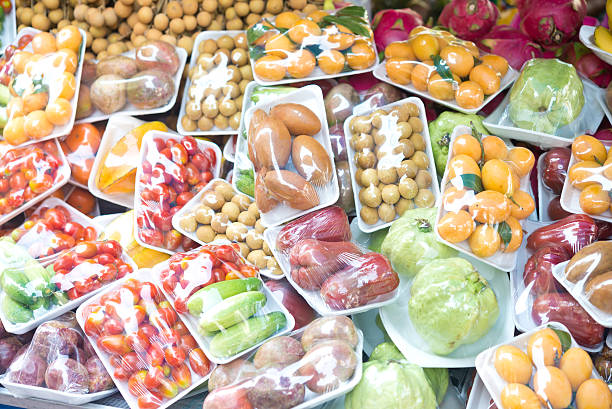
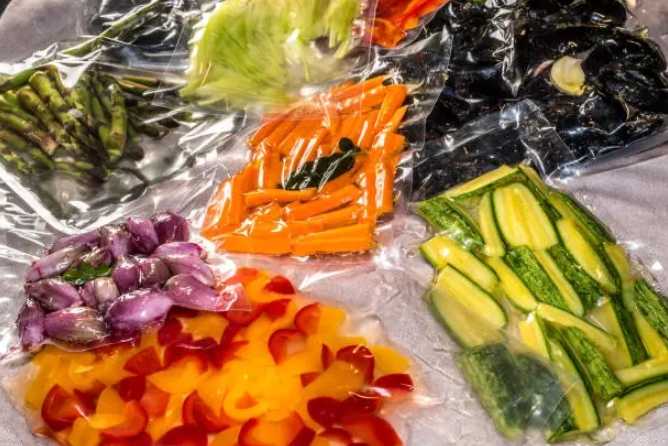
# Vacuum packages:
Vacuum packaging involves sealing produce in an airtight plastic bag, removing all air to preserve freshness. Commonly used for fruits, vegetables, and meat, this method extends shelf life by reducing oxygen exposure and inhibiting bacterial growth. Vacuum packaging also helps maintain the texture and flavor of the product, making it ideal for long-term storage and transportation.
A Few Lessons About Choosing the Right Package
Farming is a very special activity that is highly dependent upon natural processes. In regards to that, every farm management should be unique. Each farmer’s decision, as well as each farm practice, can result in unexpected results. The same is with crop packing management. In order to manage crop packing successfully, while deciding on the right crop package, farmers should keep in mind a few of the following tips:
Five Trends in Fruit and Vegetable Packaging
Consumers are more concerned than ever about what they eat and where their food comes from. The growing demands in terms of health, sustainability, and organic production determine not only what customers eat but also the purchasing behavior of modern consumers.
At the same time, the variety of food products is increasing enormously – there are also constantly changing breeds and new varieties in the fruit and vegetable sector. Along with these changes, the packaging requirements are changing as well.
Trend 1: Sustainability along the supply chain
Eco is in! The desire for sustainable food ranges from production, up the value chain, into the kitchen. Packaging plays an important role throughout the supply chain– in terms of freshness and protection of goods, quality, and labelling. Corrugated cardboard or full cardboard packaging is not only nearly 100 per cent recyclable, but it is also made from renewable raw materials, which has a positive impact on the CO2 balance.
In addition, such packaging is much more natural than plastic and is rightly perceived by consumers as sustainable and environmentally friendly. For this reason, supermarkets and discounters are increasingly using cardboard instead of plastic in the packaging of fruit and vegetables.
Trend 2: Promoting the regional character
Promoting the Regional Character has become a significant trend in fruit and vegetable packaging. This approach highlights the origin of the produce, adding value by emphasizing unique qualities tied to its geographical location. Packaging often incorporates regional designs, local languages, and symbols to appeal to consumer emotions and pride. It fosters a connection between buyers and the story behind the produce, creating a sense of authenticity and trust.
This trend benefits local farmers by enhancing brand identity and enabling them to differentiate their products in a competitive market. It also aligns with the increasing consumer demand for transparency and traceability, as many shoppers prefer locally-sourced or regionally distinctive products.
Trend 3: Optimum advertising effect through a variety of printing process
Trend 4: Multi-functional packaging
Trend 5: Convenient and custom packaging
Convenience and customisation are key trends reshaping fruit and vegetable packaging to cater to modern consumer lifestyles. Packaging solutions such as zip-lock pouches, resealable bags, and modular containers offer ease of use, making them ideal for on-the-go consumption and storage. Customisable sizes, ranging from single-serve packs to bulk options, address diverse market needs and reduce waste. These designs prioritise user convenience while preserving the freshness and quality of the produce, appealing to busy, urban consumers seeking practicality in their purchasing choices.
About PrimePac
We design creative packaging solutions that cater to a diverse global audience with the in-house knowledge and network of experienced professionals to meet the demands of every type of client.
Network
Our service support team is based in Guangzhou, China’s manufacturing hub, offering quick response times and in-depth local industry expertise. Additionally, our warehouse and 3PL network in Sydney ensures fast distribution and reliable delivery to your customers.

